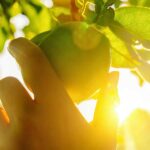An essential medical post was recently published by scientists at Yale College, and they gave a resume:
“A diet of minimally processed foods close to nature, predominantly plants, is decisively associated with health promotion and disease prevention and is consistent with the salient components of seemingly distinct dietary approaches.”
To put it simply, with all our scientific refinement, the basic mantra stays the same: don’t consume way too much processed food, and also eat plenty of plants.
Yet, just how much scientific research do we require to inform us what is already, perhaps, common sense? I would certainly really hope by now it is general, well-accepted expertise that it is in our favor to refrain from eating way too much “junk food” as well as to emphasize “whole food.”
Additionally, no matter what the nutritional strategy is, we are sticking our identification to, whether it’s Paleo, anti-inflammatory reduced glycemic, detox, vegan, vegetarian, flexitarian, low-fat, low-carb, you call it, the core message remains the very same: obtain your nutrition from plants.
Nutrition scientific research is slowly moving away from protein, carbohydrate, and fat, as well as starting to explore the hundreds of substances in plants. A post I checked out several months earlier revealed that the extra we connect with plants by rubbing their fallen leaves, the more recovery substances they create. Plants are on our side. They wish to remain in close connection with us. Scientific research, as well as intuition, inform us they are truly the “best nourishment.”
Besides the advantages of organically grown plants, what is arising in plant science research is to go smaller to obtain denser-packed nutrients. As an example, microgreens, or the little brochures of premature leafy greens (grown within dirt within seven days), are super-nutrition sources of healthy and balanced compounds like carotenoids, vitamin C, as well as vitamin K. We would certainly have to consume many more fully grown spinach leaves to obtain the very same amount of nourishment in a handful of microgreens. The same thing to blueberries; the smaller the berry, the extra we get of the skin about the pleasant, sugary insides, so we can profit from proanthocyanidins or the healing plant substances that assist us in finding out and keep in mind info.
We can go even smaller when it involves plants as we start talking about just how the plants generate nourishment for us, right into the realm of what I have termed “photonic nutrition.” Photons are tiny particles of light. When the green chlorophyll in the plant catches the rays of the sunlight, energy, nutrients and, a well-known process called “photosynthesis” will be created.
All nourishment we take in starts from sunlight. Nourishment, or the act of consuming, is the process of light transfer from one type to the other, whether plant to animal to human or from plant to human. We are all consuming the items of light.
Much more interesting is that science, specifically quantum physics, is latching on to the suggestion that we are not just consuming light via the products of photosynthesis but that we are beings made from light. Depending upon our experiences throughout the day, we might feel like we are losing or acquiring energy. When we are drained, we may be leaking our valuable photonic energy.
Researchers in Europe, as well as Japan, have started to determine photonic emission from human beings and how much light we give off with complex tools that do photon imaging. The literary works on biophotonic discharge (light is given off from living microorganisms), dating back to the mid-1980s, have exposed that all life develops produce photons.
We will shift from studying diet regimen books concerning what to consume and what is right to technologies that can analyze our photonic capacity and foods so we can feed ourselves and end up being happy and healthy.





